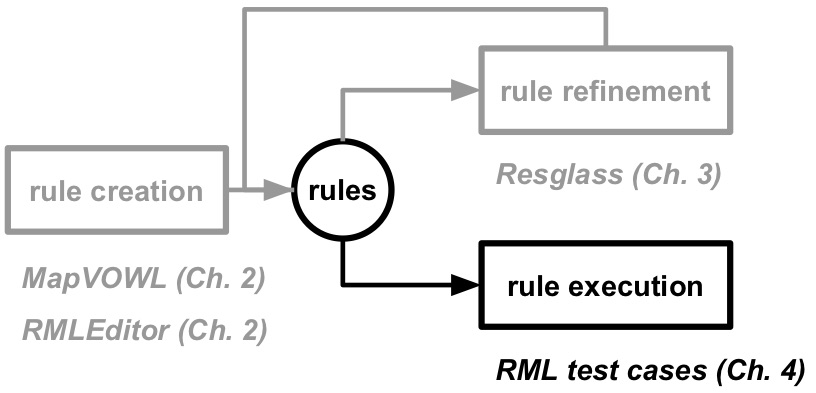Improving Effectiveness of Knowledge Graph Generation Rule Creation and Execution
Chapter 4: RML conformance test cases for rule execution

The first knowledge graph generation rule language (R2RML) only supports relational databases. Other extensions and adaptations were applied to account for other types of data sources (e.g., RML, xR2RML, and XSPARQL), together with processors that execute them (e.g., the RMLMapper, CARML, GeoTriples, and Ontario). However, unlike for R2RML, there are no test cases available to determine the conformance to the specifications of these extensions and adaptations. As a result, processors are either not tested or only tested with custom test cases, which do not necessarily assess every aspect of the specification. Consequently, no test cases are available that allows comparing the different processors that generate knowledge graphs from heterogeneous data sources based on the conformance to their specifications. This way, it is hard for users to determine the most suitable tool for a certain use case.
This chapter contributes to rule execution, where Chapters 2 and 3 contribute to rule creation, and describes an initial set of conformance test cases for RML, based on the R2RML test cases. We use RML, because it supports heterogeneous data sources and is based on R2RML for which already test cases are available. This is done towards designing test cases that are independent of RML and are applicable to all languages that generate knowledge graphs from heterogeneous data sources, which addresses Research Question 4 "What are the characteristics of test cases for processors that generate knowledge graphs from heterogeneous data sources independent of languages' specifications?"
As this is a cumulative dissertation, we refer to the publication "Conformance Test Cases for the RDF Mapping Language (RML)" for the remainder of the chapter.
----